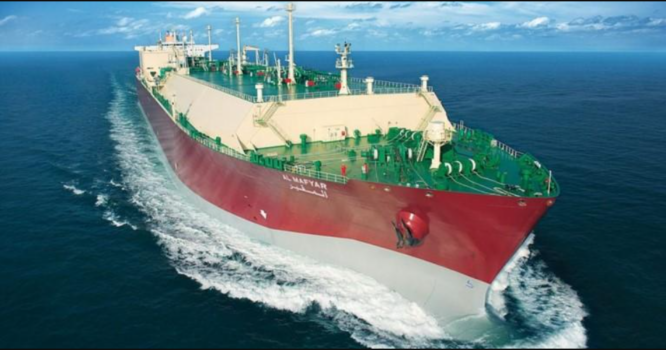
According to Clarkson Research, the new liquefaction capacity that is now under construction will require the great bulk of these ships, which amounts to 268 individual units.
Clarkson stated that there are already 309 orders for large LNG tankers, but more newbuild contracts are expected for two projects in the United States: Plaqumines Ph 2 (10 mtpa) and Port Arthur (13 mtpa). This year, both planned developments have been given the green light in terms of making final investment decisions.
As of the middle of April, there has been the placement of orders for nineteen aircraft carriers, and although it is unlikely that this year’s total will reach the 184-ship record set last year, analysts believe that contracts for more than one hundred further ships could be secured this year.

More than forty percent of LNG carriers currently on order will integrate environmentally friendly technologies such as air lubrication systems and exhaust gas economizers.
A record 325 LNG carriers, half the fleet, are on order.
Even though a large number of ships will be necessary for the new projects, such as Qatar’s enormous North Field Expansion, for which 66 ships were already ordered the previous year, there will also be a significant demand for replacement vessels.
There are around 241 steam-turbine ships in the fleet, 45 of which are already more than 25 years old. This represents 17% of the whole fleet. However, the future of not only the older steamers but also of other types of ships is uncertain.
Because they do not have boil-off management systems, the majority of steam turbine ships are likely to fall into categories D and E under the International Maritime Organization’s carbon intensity index (CII), according to a recent analysis conducted by Lloyd’s Register. Even before methane emissions are factored into the CII study at the beginning of 2026, the carriers are going to have a difficult time performing well in the initial ratings.
In the meanwhile, Clarkson predicts that the demand for between 30 and 40 additional ships would be generated if there was a reduction in speed of one knot across the fleet to minimize emissions. However, there is a possibility that shipyard capacity will be an issue. Separate research has demonstrated that the six specialized LNG building yards will be operating at near capacity until the year 2027.
According to experts, the development of new building facilities or the adaptation of existing ones provides a significant problem due to the skill required as well as the cost involved, particularly during a period in which there is an increased demand for ships with a lower level of technological sophistication. In addition, new ship prices remain stable across the board.
Clarkson is confident that the present upward trend in the construction of new LNG carriers will maintain its momentum. “The LNG sector is still very much in major phase of expansion,” the report stated.
